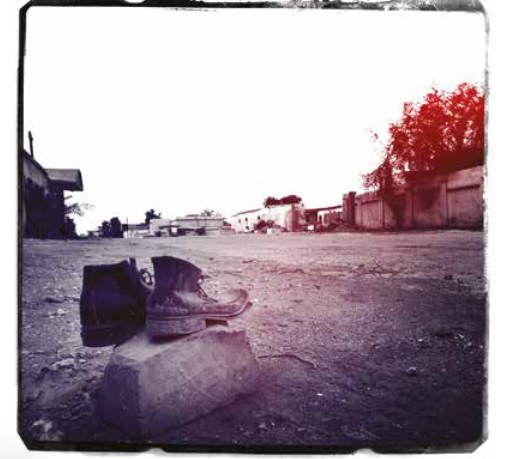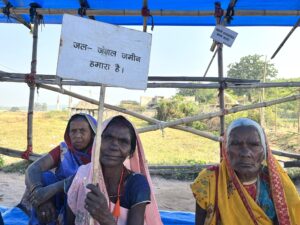

A Small Retelling

Gujarat 2002 has been one of the most litigated, mediatized, and politically polarizing events of mass atrocity in contemporary India. The version of the events of the pogrom and the narrative that I hold on to through this chapter is aimed at foregrounding the ‘small voices’, to borrow historian Ranajit Guha’s expression (1996: 1–12), that struggle to keep alive a certain memory of the pogrom in an India where they are constantly being ‘drowned in the noise of statist [and increasingly corporatist] commands’ (1996: 3), that propagate a dominant memory.
It has been over a decade since the western Indian state of Gujarat experienced one of independent India’s most violent mass atrocities against its Muslim minority population. Postcolonial India has experienced many incidents of anti-minority mass religious violence since the Partition in 1947: notably, the ongoing persecution of Muslims by the occupying Indian army in Kashmir, the 1983 massacre of Bengali Muslim immigrants from Bangladesh in Nellie, Assam, the anti-Sikh violence of 1984 in Delhi, the anti-Muslim violence of 1992 in Bombay (now Mumbai), and the anti-Christian violence in Kandhamal, Odisha in 2008. All of these events have been part of a larger script that animates the violence of postcolonial state-making. However, during Gujarat 2002, the sophisticated organization of the violence, the macabre forms of brutality, and the extent of state involvement, particularly police inaction and complicity, was unprecedented (Chopra and Jha 2014). Although official estimates state that the violence lasted for three days, many Gujaratis say that it lasted for as long as three months (Ghassem-Fachandi 2012: 1).
The killings, rapes, arson, and destruction continued unabated, yet despite a complete breakdown of law and order and grave instances of police inaction, a constitutional state of emergency was not declared by the president of India. It can be argued that such a decision reveals how the federal government—which at that time was the Hindu nationalist BJP-led NDA coalition—condoned the event. This failure to impose president’s rule rendered the violence as not deserving of federal attention in political and public consciousness, even though it could be considered to be a situation where there was a complete breakdown of the constitutional machinery.
Starting on 28 February 2002, Hindu militant mobs—with active support from Hindu right-wing political factions like the Rashtriya Swayamsevak Sangh (RSS), the Vishwa Hindu Parishad (VHP) or the World Hindu Council, and the Bajrang Dal—singularly targeted Muslim across urban and rural Gujarat: killing close to 2,000 people (which included some Hindu, Christian, and Parsi lives as well), ‘disappearing’ an estimated 2,500 people, and driving tens of thousands homeless (Human Rights Watch 2002). Sexual violence was rampantly used to murder Muslim women, including those who were pregnant, which in turn was meant as a humiliation of the entire Muslim community (International Initiative for Justice in Gujarat 2003). Homes and property owned by Muslims were pillaged and burnt. Several mosques were desecrated and razed to the ground and roads paved over them. The violence targeted Muslims across the board, irrespective of their class status and residential locations (Engineer 2003). That Muslims could be attacked in such a systematic manner without much resistance from the community was not only because of the state administration’s complicity and police inaction. The sophisticated organization was also made possible because an attack on Muslims had been planned well in advance. This planning included
the advance accumulation of arms by Hindu militant groups (Setalvad 2017: 213) and legislative planning of the city of Ahmedabad over many years, which resulted in the creation of Muslim ghettos whose captive populations were easy to attack (Rajagopal 2011; Jaffrelot and Thomas 2012: 43–81). The violence, thus, was not akin to a ‘riot’—a spontaneous conflagration—but a result of long-term and systematic planning aided through state support that characterizes a ‘pogrom’ (Setalvad 2013: 10).
Even over a decade after 2002, many Muslims are still displaced, and many victim-survivors await compensation for damages (Amnesty International 2012; Choksi 2014). The criminal justice processes trying some of the perpetrators have been under threat of being compromised by political interference (Jaffrelot 2012: 77), the intimidation of witnesses and judges (Misra 2015; Johri 2015; Human Rights Watch 2004), and faulty investigations by the police and special investigation agencies (Mitta 2014; Ayyub 2016; Farasat and Jha 2016). By the Gujarat government’s own admission made to the Supreme Court of India, of a total of 4,252 cases that victim survivors registered with the police, nearly half were summarily closed by the police and thus never progressed to the trial stage (Chopra and Jha 2014: 174). For the few cases that did get to trial, some in the first instance resulted in full acquittal of all accused due to lack of evidence, reflecting the police’s tardy investigation. State impunity in India, especially for mass anti-minority violence, is strengthened by the active cooperation of the criminal justice system, and local political and patronage networks (Hoenig and Singh 2015; Nainar and Uma 2013). If lower conviction rates in the post-pogrom trials are one way to measure state impunity, then Gujarat has been particularly notable. As of 2012, in comparison to the national conviction rate of 18.5 per cent for cases related to riots, the conviction rate in cases related to the pogrom in Gujarat was 1.2 per cent (International Human Rights and Conflict Resolution Clinic 2014: ii).
Despite the failures in investigation and prosecution related to criminal trials arising out of the pogrom, the judiciary has projected itself as an able and willing neutral arbiter of justice that is not complicit with the deep structures of Hindutva’s anti-Muslim prejudice. This has been called the ‘impunity effect’: ‘how a majoritarian regime conducts farcical legal proceedings that allow it to acknowledge, yet benefit from, state-backed violence against minorities’ (Chatterjee 2017: 118).
Since the 2002 pogrom, Gujarat, under the chief ministership of Narendra Modi (since 2014, the prime minister of India) of the BJP, has been celebrated as one of India’s most developed states with unparalleled urban and industrial infrastructure, and has become a preferred destination for corporate investments by multinationals. Due to the projections of rapid growth rates and ease of doing business, the Gujarat Model has been showcased by political parties and industrialists as a template for development in the New India.
These projections have been questioned by scholars who have argued that Gujarat’s growth is built on the structural marginalization of populations like Muslims, Dalits, and Adivasis. The Gujarat Model has been analysed as playing a role in consolidating the state’s Hindu majoritarianism, and has also been deployed to whitewash the
memories of 2002 (Sood 2012; Sud 2012; Chandoke 2012: 10–11; Jaffrelot 2015: 820; Hirway, Shah, and Shah 2014). Modi’s critics, particularly the secular-left, allege that he—along with other politicians in the Gujarat BJP oversaw the planning and execution of the 2002 violence. It has been argued that the pogrom was meant to be a definitive step towards furthering the Hindu Right’s vision of establishing India as a Hindu rashtra (Shani 2007; Balagopal 2002: 2117). Hindutva’s neo-fascist vision, inspired by Zionism, wants to establish India as the holy land of Hindus only (Gregor 2006: 197–227; Noorani 2017; Sen 2015: 690). Muslims and Christians who are in the territory of India are outsiders because their holy lands are elsewhere. According to Hindutva ideology, those who follow Islam and Christianity must assimilate if they wish to stay in India, or their forced removal or killing will stand justified. In the making of such an ideology against Abrahamic monotheism, Hindutva, ironically, advances an idea of Hindu religion tied to a single all-powerful god in the mythological figure of Ram.
Gujarat has been considered by many as the Hindutva Laboratory that experimented with the pogrom in furtherance of its neo-fascist mission by teaching Muslims in India a lesson (Spodek 2010: 349–99). Modi and many of his ministers in Gujarat have been named in independent fact-finding reports (Concerned Citizens Tribunal 2002), survivor testimonies (Citizen’s Initiative 2002), revelations by public servants ( The Hindu , 20 August 2009; The Times of India, 1 October 2012), media investigations (Tehelka , 2 November 2007), and statements by the Supreme Court (Zahira Habibulla H. Sheikh vs State of Gujarat, 12 April 2004) for having ordered the police to step back and let the mobs rein free, for having instigated the mobs with their inflammatory anti-Muslim speeches, and for justifying the pogrom by citing the Godhra train-burning incident of 27 February 2002 that killed 58 kar sevaks (Hindu pilgrims) as the legitimate cause for this pratikriya (retributive action) by angry Hindus. The incident of the burning of compartment S-6 of the Sabarmati Express, carrying kar sevaks returning from Ayodhya, 14 allegedly by Muslim mobs at Godhra station in Gujarat, has come to stand as the temporal and ideological justification for the pogrom, or as the ‘precipitating event’ (Nussbaum 2004: 2). In line with the Newtonian explanation that Narendra Modi provided to rationalize the violence—‘every “action” has an equal and opposite “reaction”’— almost all references to the Gujarat pogrom till today continue to replay this cause-and-effect logic of equivalence: the Muslims burnt the Hindus in the train, so now the Hindus are taking their revenge on the Muslims.
Collective memory of the pogrom has thus been mobilized through the marking of Godhra as a singular history-
vanishing ‘flashpoint’ that turns Hindus into victims, and blinds us to the deep and dispersed structures of prejudice which informed how the pogrom was meticulously planned much before the train caught fire. It also masks the historical and economic antecedents of Hindutva in Gujarat that did not erupt only as a spontaneous and reactionary response to Godhra (Yagnik and Sheth 2005).
The foregrounding of this small retelling gains special significance at this particular point in contemporary Indian history, because Narendra Modi, the current prime minister of India, representing the Hindu nationalist BJP, was the chief minister (CM) and the home minister of Gujarat in 2002. The pogrom was orchestrated under his watch, and it has been argued on the grounds of empirical evidence that it is the pogrom that consolidated the Hindu vote in Modi’s favour, and led to him winning four consecutive state elections in Gujarat as CM since 2002 (Kumar 2002: 270–5; Iyer and Shrivastava 2018: 104; Kenny 2017). In 2014, a sophisticated, media-managed mixture of soft Hindu nationalism and robust neoliberal developmentalism was the resounding campaign call that got Modi elected as prime minister in an election that saw a clear majority emerge for a single party for the first time since 1984 (Bobbio 2013: 123–34; Chacko and Mayer 2014: 518–28; Simpson 2006: 331–48). During the run-up to his prime ministerial campaign, Modi was exonerated in 2012—given a ‘clean chit’—by a Supreme Court of India–appointed special investigation team (SIT), which was tasked with specifically looking into three major massacres committed during the pogrom. The SIT’s ostensible independent functioning has been questioned for procedural, investigative, and ethical lapses, especially in the way it has been complicit in protecting Modi from being criminally prosecuted (Mitta 2014; Setalvad 2013: 10–13; John 2017). A protest petition by Zakia Jafri, a victim-survivor, against the SIT’s exoneration of Modi was also dismissed by a court in Ahmedabad in 2013, upholding the ‘clean chit’ (Hindustan Times, 26 December 2013).
In response to this judicial exoneration of his accountability as head of state, Modi tweeted ‘Satyameva Jayate’, or
‘truth alone triumphs’ (Hindustan Times 2013), a Sanskrit expression from an ancient Hindu religious text (the Mundaka Upanishad) that has been secularized to accompany independent India’s national emblem, and that serves as a foundational idea of Indian constitutionalism (Debroy 2012). In fact, if postcolonial India’s ostensibly secular legal system, with particular regard to the apex court, had to write its autobiography, it would repeat and echo Modi’s tweet with equal exuberance when it comes to the judiciary’s performance in delivering justice in cases of mass anti-minority violence, including Gujarat 2002 (Grover 2002: 355–88).
Despite the failures in investigation and prosecution, judicial rationality—even in its condemnation of Modi as a ‘modern day Nero’ (Zahira Habibulla H. Sheikh vs State of Gujarat, 12 April 2004)—has projected itself as an almost transcendental arbiter, uncontaminated by any complicities with the deep structures of anti-Muslim prejudice of Hindutva that formed the foundations of the pogrom. In fact, in 1994, it was the SC that granted judicial imprimatur to the idea of Hindutva, recognizing it as a way of life rather than neo-Fascist ideology, providing much fillip to the institutionalization of Hindutva, which has only been strengthened over time (Cossman and Kapur 2001; Sen 2010).
Modi’s version of the truth about Gujarat 2002 can be gleaned from his response in an interview to Reuters, where he likened his feelings for the victims as the sadness that a person in a car would feel if the driver runs over a puppy (Colvin and Gottipati 2013). Regarding continuing to fund relief camps for the Muslims dis- placed by the pogrom, Modi has expressed eugenicist panic about how they can turn into ‘child producing centres’ that will breed more Muslims (Outlook, 30 September 2002). The possibility of him expressing even an iota of remorse for the pogrom had turned so absurd that a news outlet had to speak of it in the form of an April Fool’s day joke (Firstpost, 1 April 2013). His standard refrain whenever asked about the 2002 violence has been to say: ‘Why even talk about 2002? […] It’s the past. What does it matter?’ (quoted in Dalrymple 2014).
Footnotes have been removed for readability.





